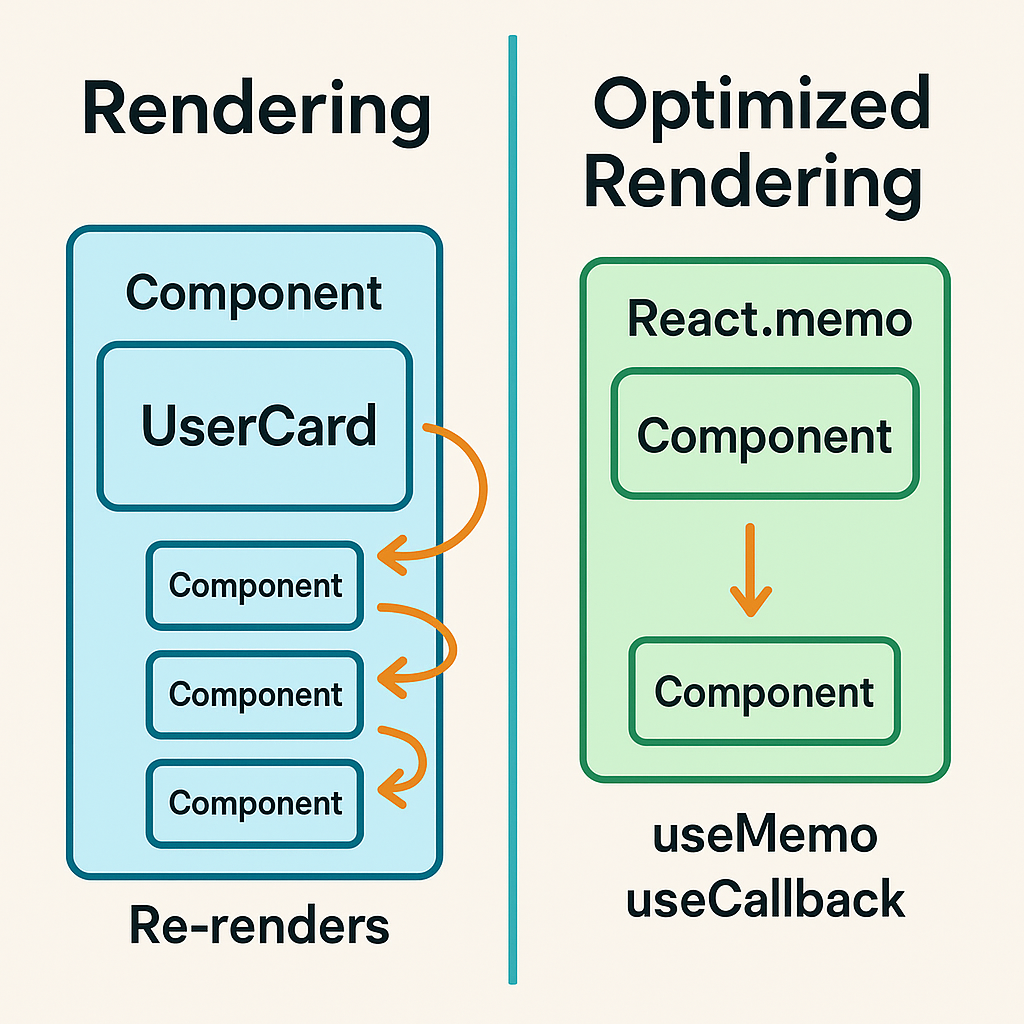Introduction
React’s declarative nature makes building UIs intuitive, but frequent and unnecessary re-renders can cause performance bottlenecks. This becomes more noticeable in high-traffic applications, dashboards, and real-time event management systems where UI responsiveness is critical.
In this blog, we’ll explore the causes of unnecessary re-renders in React, and share proven techniques to optimize your UI for smooth performance and faster response times.
1. Why Do Re-renders Happen in React?
A React component re-renders when:
- Its state changes.
- Its props change.
- Its parent re-renders and passes down new props.
While re-renders are essential for UI updates, excessive or unnecessary re-renders can slow down the application.
2. Identifying Unnecessary Re-renders
Before optimizing, identify bottlenecks using:
- React DevTools Profiler → Visualize which components re-render and how long they take.
- console.log() debugging → Simple checks for props/state changes.
3. Techniques to Reduce Re-renders
a) Use React.memo
Wrap functional components with React.memo to prevent re-rendering unless props change.
const UserCard = React.memo(({ user }) => {
console.log("Rendering UserCard");
return <div>{user.name}</div>;
});
🔹 Use Case: Static or rarely updated components like profile cards, navigation bars.
b) Optimize Context API Usage
Context can trigger re-renders for all consumers when values change.
- Solution: Split contexts for different concerns, or use libraries like Zustand or Jotai for state management.
c) Use useCallback for Functions
Inline functions cause re-renders as new function references are created on each render.
const handleClick = useCallback(() => {
console.log("Clicked!");
}, []);
🔹 Use Case: Passing callbacks to child components.
d) Use useMemo for Expensive Calculations
Memoize heavy computations to avoid recalculating on every render.
const sortedUsers = useMemo(() => {
return users.sort((a, b) => a.name.localeCompare(b.name));
}, [users]);
🔹 Use Case: Sorting, filtering, or processing large datasets.
e) Avoid Re-rendering Lists Unnecessarily
- Use
keyprops properly in lists. - For large datasets, use windowing libraries like
react-windoworreact-virtualized.
f) Debounce or Throttle Frequent Updates
- Reduce re-renders caused by search inputs or scroll events.
- Example with
lodash.debounce:
const handleSearch = useCallback(
debounce((value) => setQuery(value), 300),
[]
);
g) Split Components (Granular Rendering)
Break down large components into smaller ones so only the necessary part re-renders.
function Dashboard() {
return (
<>
<UserStats />
<Notifications />
<EventList />
</>
);
}
4. Advanced Techniques
a) Avoid Inline Objects/Arrays in Props
Passing new object references forces child re-renders.
// Bad
<Component style={{ color: "red" }} />
// Good
const styleObj = { color: "red" };
<Component style={styleObj} />
b) Batch State Updates
React batches updates, but ensure related state changes are grouped.
// Instead of:
setCount(count + 1);
setTotal(total + 1);
// Use:
setState(prev => ({ ...prev, count: prev.count + 1, total: prev.total + 1 }));
c) Lazy Loading & Code Splitting
Load heavy components only when needed using React’s lazy and Suspense.
const Chart = React.lazy(() => import("./Chart"));
5. Monitoring Performance
- Use React Profiler to measure rendering time.
- Integrate Lighthouse audits for performance scoring.
- Add performance marks for critical UI flows.
Conclusion
Reducing unnecessary re-renders in React is key to delivering fast and smooth UI experiences. By applying memoization (React.memo, useMemo, useCallback), granular rendering, caching, and debouncing, developers can significantly improve performance, especially for large-scale, high-traffic applications.








